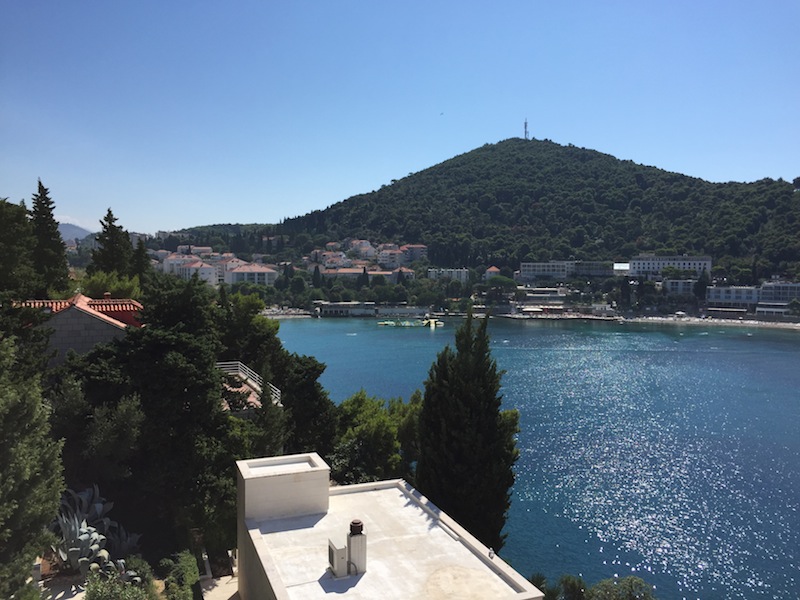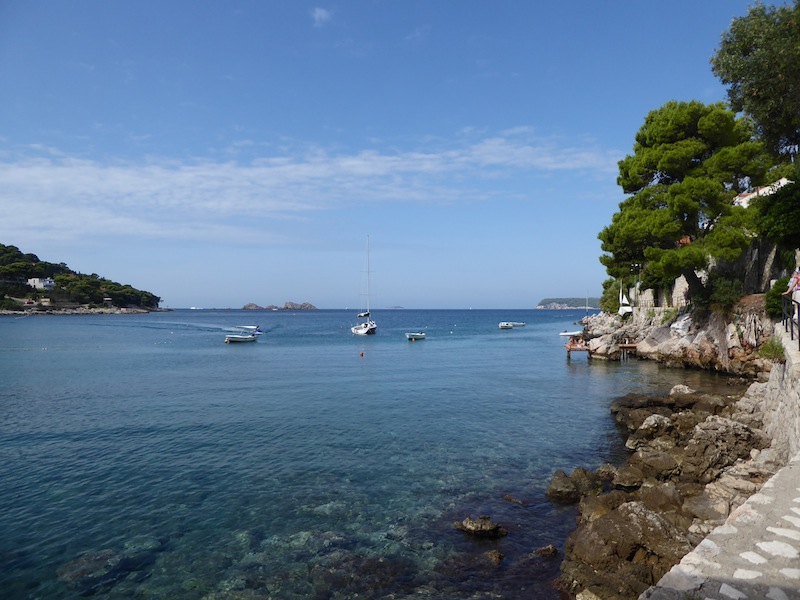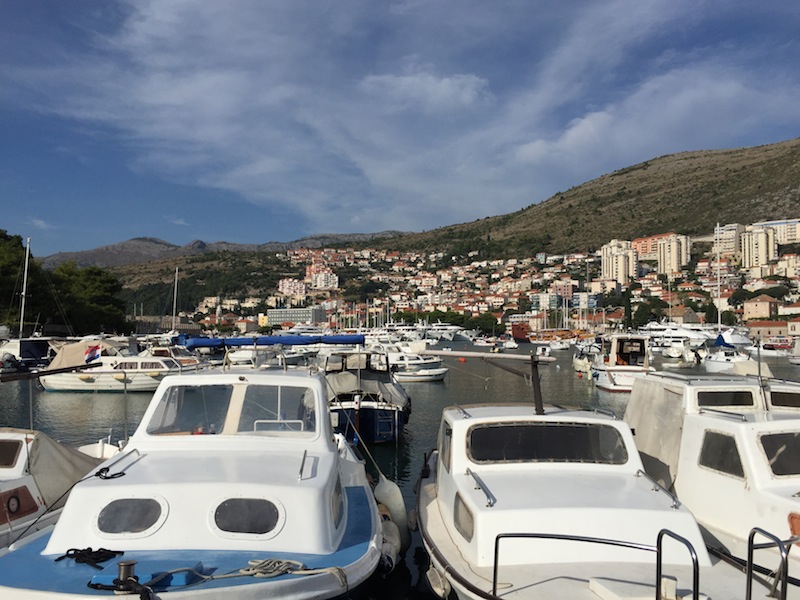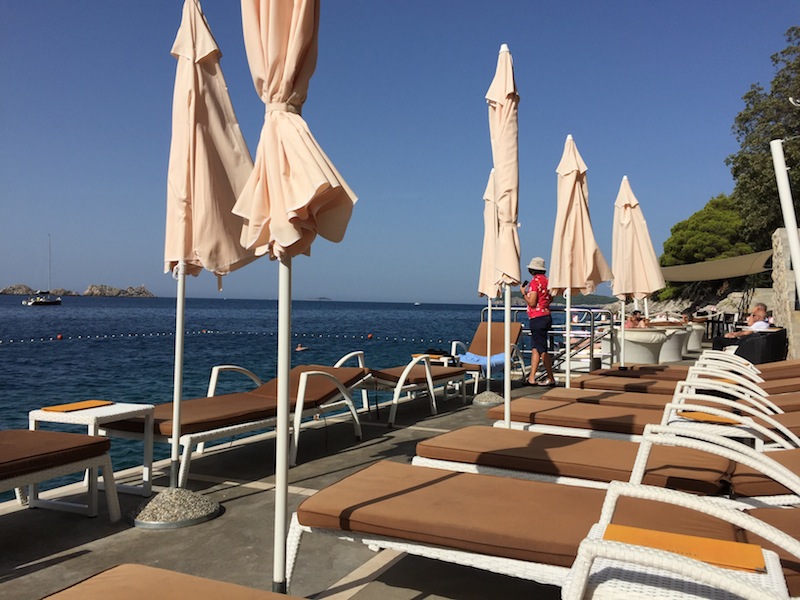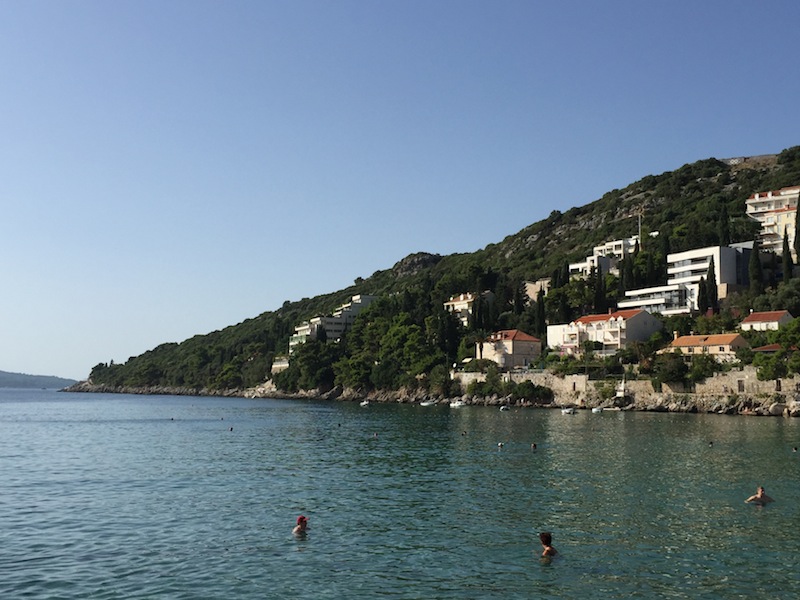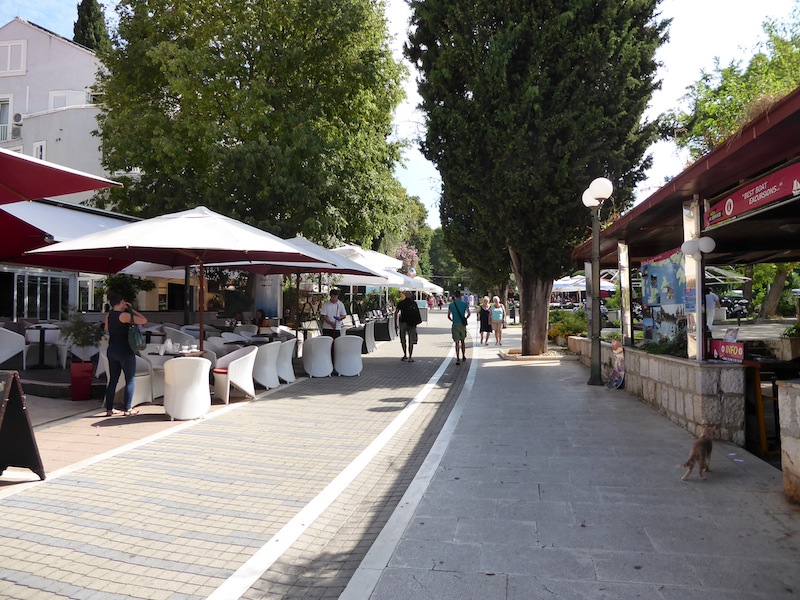Croatia has a memorable coastline. It’s jagged, scarred and never dull. Hundreds of islands of all shapes and sizes, covered in greenery, lie in the sapphire blue of the Adriatic sea, some inhabited, some deserted.
From thousands of feet up in our Monarch aircraft in the late summer of 2015, I watched the islands float by. The sea looked as flat as glass, and little toy boats chugged between them, leaving foamy white trails in their wake. As we descended, the arid, scrubby hills of the country’s west coast came up on us, representing the physical barrier that divides this snippet of Croatian coastline from the bulk of Bosnia beyond.
We were staying in one of Dubrovnik’s suburbs, Lapad, some miles north of the airport and the historic walled city. Our cab driver hurtled along the roads, high up in the hills, her phone clamped alarmingly to her ear, but giving us some incredible views of the coastline and old Dubrovnik below. At Lapad we checked into the 5-star Hotel More. A 10-minute walk from the heart of the suburb, it tumbles down the hill to the bay below and has views of the Elafiti Islands beyond.
Throughout our stay, the bay was the proverbial hive of activity. We watched paddle boarders and yachts, giant cruise ships and humble ferries, jet skis and pleasure craft, fishermen and water taxis ploughing this way and that. We spent many a lazy day watching them from the sunbeds on the hotel’s concrete beach, soaking up the sun, reading books, drinking beers.
I cooled down in the incredibly clear waters of the Adriatic but Graham steered clear, never a fan of the sea or being out of his depth in deep water. For there was no paddling in this part of the bay. I bought some gear and took my first tentative steps at snorkelling, to see the fish darting around below and the sea urchins clamped to the jagged rocks. As a destination, I was totally and completely won over by it.
The hotel’s Cave Bar helped. It was a local landmark, a cave (not surprisingly) with a narrow entrance that opened into a cavernous space. Buried in the cliff below the hotel with stalactites and stalagmites, one of the spaces offered a glass floor over a pool and some mesmerising rock formations that looked like something out of an Alien movie.
The hotel deceived me. I had imagined that Lapad would be a glam resort to match the More’s 5-star status, but that’s not how we found it. It is, after all, a functioning city suburb. It had a lived-in feel as any home to city workers does, and there were some busy roads a short walk away from the coast.
We walked down some of those suburban streets in the heat to Dubrovnik’s busy harbour at Gruz, where small craft shared the water with giant cruise ships, and handsome villas in varying states of repair looked out to sea. A modern bridge, the Franjo Tuđman, carried traffic north. It was named after the controversial president who ruled Croatia during the horrific Balkan Wars and the break-up of Yugoslavia. As we walked around the harbour, we came across a couple of military vehicles displayed proudly by the main road, a reminder of that all-too-recent conflict. The plaques screwed to them made it obvious that Croatian hostility towards the Serbs and Montenegrins, the principal enemies, remained despite all that surface normality.
Back in Lapad, most of the bars and restaurants could be found on and around the pedestrianised street that runs from the town centre down to the pebbly beach – the Krajla Zvonimira. Amid the detritus of 21st century tourism, some sturdy stone buildings stood out to give it character.
The seafront itself had the feel of a faded English seaside resort – a bit dated, worn and unkempt. The mass of concrete and the lack of sand made it look brutal in places but the green hills behind, with their pines, olive and citrus trees, helped soften the rough edges. Elsewhere, average hotels, the gleamingly modern Hotel Kompass and the villas looked out over the water. We walked down to the beach a couple of times, where the water was shallower for Graham, but the pebbles and rocks made it a painful exercise.
We spent many of our evenings on Krajla Zvonimira, watching tourists and locals alike promenading, some trailing dogs, others fending off the touts trying to flog boat trips to the islands. Feral cats were as ubiquitous as they were in Istanbul. Perhaps it was getting to the end of the season but there were a surprising number of elderly folk around, as well as chavs in tracksuits and blokes with no dress sense. Brits were far too numerous.
We drank beer, discovered an excellent white wine, Zlahtina, and watched the cruise ships disappearing into the darkness of night, lit up like a Christmas tree on steroids.
The restaurants were largely average, apart from a few notable exceptions. Among them were Atlantic Kitchen and Pantarul, which probably benefitted from being away from the main drag. And I greatly appreciated their lack of touts.
We took day trips to Dubrovnik and Lopud in the Elafiti Islands. But otherwise Lapad did us proud. And as a city, Dubrovnik won me over to Croatia.

